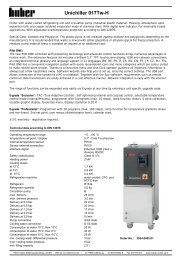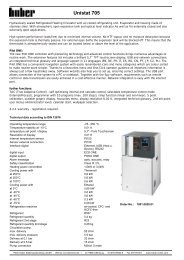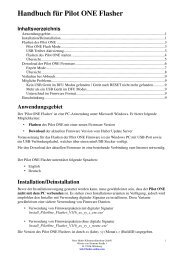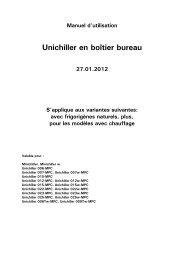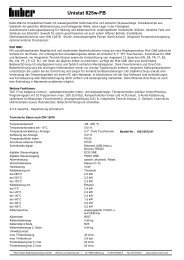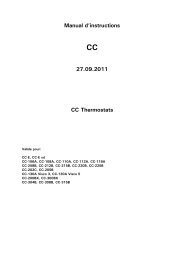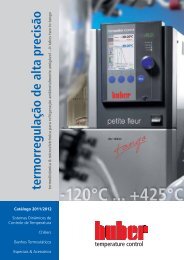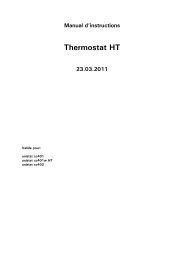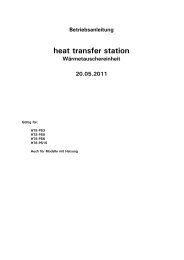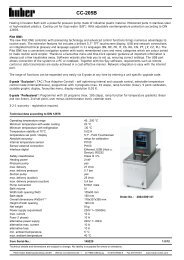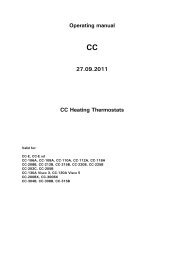Plug & Play - HUBER
Plug & Play - HUBER
Plug & Play - HUBER
You also want an ePaper? Increase the reach of your titles
YUMPU automatically turns print PDFs into web optimized ePapers that Google loves.
Utilise existing energy sources<br />
K Method 1: The heat is transferred from the steam to the thermal fluid through the<br />
external heat exchanger. If necessary, the Unistat can raise temperatures up to +400 °C.<br />
K Method 2: The use of electrical heaters is inadvisable because of the high cost of<br />
consumed electricity. We consider electrical heating to be limited to 200 kW, because of<br />
high installation (infrastructure) and running costs.<br />
K Method 3: The cooling system works in a similar method to system 1; cooled heat<br />
transfer fluid (down to 20 ºC) is transferred from the plant chiller* through the external<br />
heat exchanger, and lower temperatures (90 ºC … 120 ºC) can be achieved with the<br />
Unistat.<br />
*If required, Huber can supply a powerful chiller with a cooling capacity of up to 400 kW<br />
@ 0 °C.<br />
K Method 4: Liquid nitrogen enters the external (LN2/thermal fluid) heat exchanger<br />
conducts cooling capacity at low temperatures.<br />
The Unistat controls and regulates the dosing of nitrogen into the heat exchanger. The<br />
Unistat controls all systems (steam module, chiller, nitrogen) automatically and monitors<br />
reactor temperature by means of an external Pt100 sensor.<br />
Installation diagram<br />
Models | Unistat ® Hybrid Industrial<br />
Pic. 2: External heat exchanger<br />
for steam<br />
System 1<br />
The Unistat ® (Left) and external heat<br />
exchanger unit (center) connect to<br />
the reactor jacket mantel (Right).<br />
The Unistat ® thermal control system<br />
and external heat exchanger unit<br />
is connected to the reactor jacket.<br />
The heat transfer oil flows through<br />
the Unistats ® , heat exchanger and<br />
reactor jacket.<br />
System 2<br />
Complete solution: The Unistat ® Hybrid thermal control system with external heat exchangers for the various energy sources<br />
serves for an optimum interaction between them. The individual external energy sources (steam, cooling water, liquid Nitrogen)<br />
are precisely controlled from the Unistat ® and the reactor temperature is monitored using an external PT100. Depending on the<br />
application, the heat exchanger can be built into the Unistat ® .<br />
39<br />
Dynamic Temperature Control Systems



